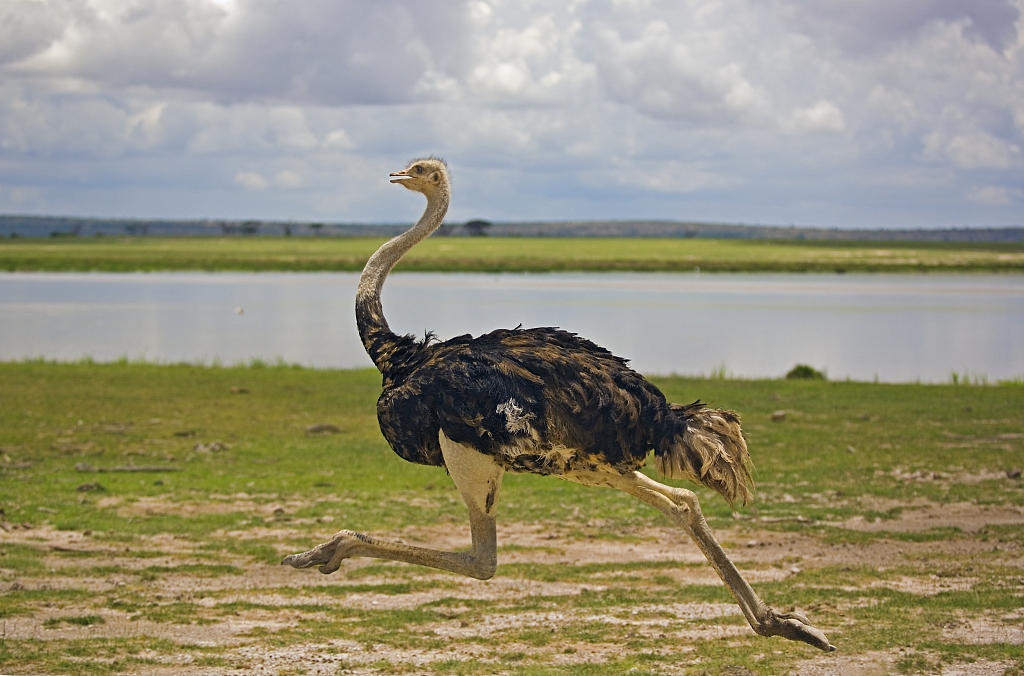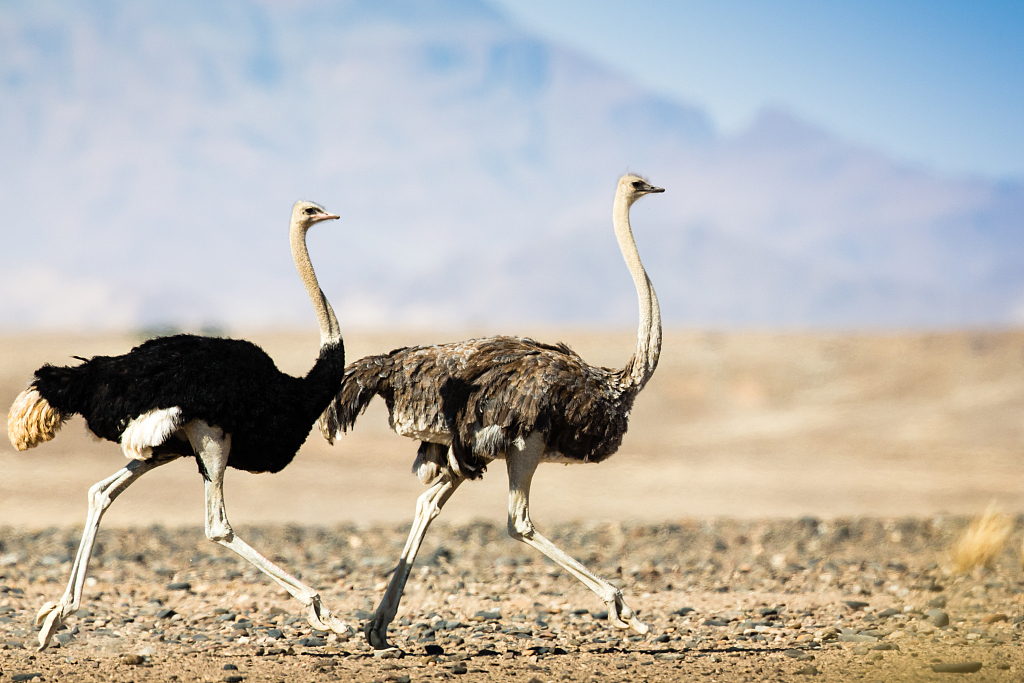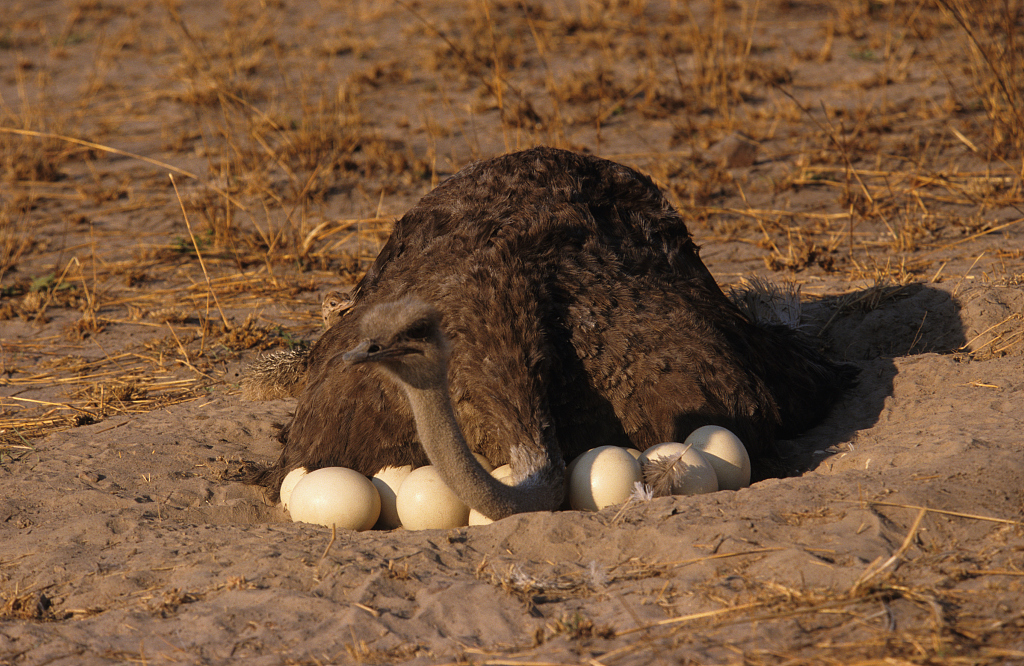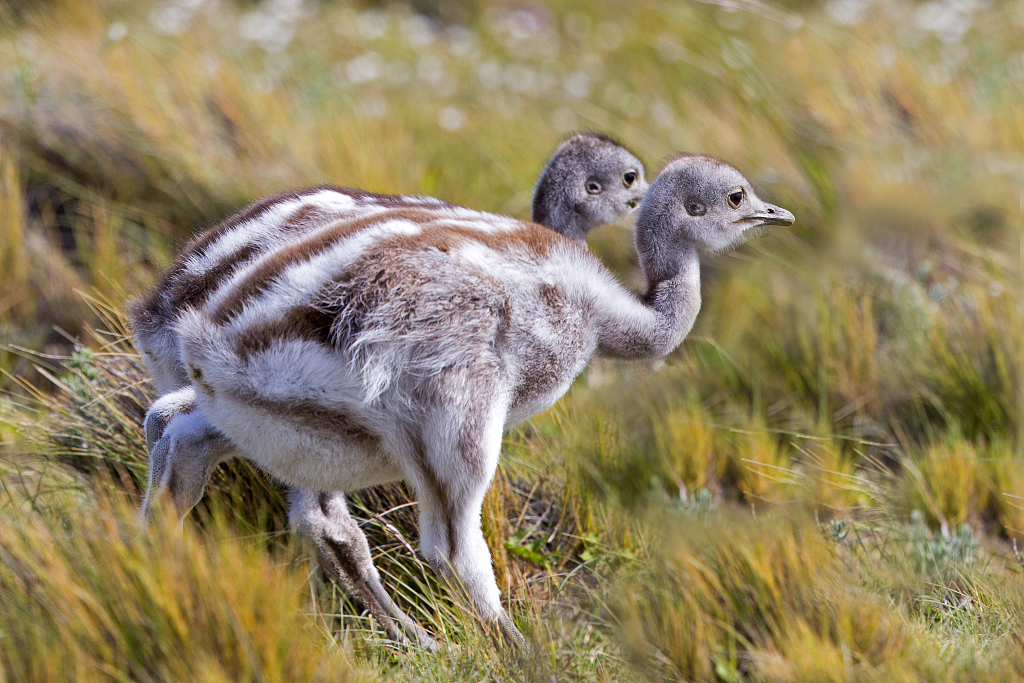Editor's note: For an entire month starting August 17, CGTN will be bringing this year's Great Wildebeest Migration to your living room with our new series "Digital Safari." Let's jump onboard and get to know more about these amazing wild animals and the wonderful nature.

The ostrich is known as the world's largest bird, but it can't fly. Instead, it can run very fast and reach speeds up to 70 kilometers per hour, making it one of the fastest animals roaming the African savanna. Though the bird is flightless, its wings can still help it balance itself at high speed. Otherwise, it could only have run fast in a straight line.
Digital Safari: The bird that can not fly
The ostrich has strong and long legs, their legs are longest among all flightless birds, which means they have a longer stride up to more than five meters.
Their quick speed can help ostriches to run away from their predators including lions, hyenas and leopards. The ostrich's amazing combination of speed and endurance makes it a hard catch for large animals. There is a popular belief that ostriches bury their heads in sand when facing danger. But it's actually not true. When the bird gets defensive, they lie low and press their necks to the ground so they can blend well with the background.

The ostrich has strong and long legs. /VCG
The ostrich has strong and long legs. /VCG

Ostrich eggs are known for their size and an ostrich hen lays around 8 eggs at a time. /VCG
Ostrich eggs are known for their size and an ostrich hen lays around 8 eggs at a time. /VCG

Two little ostriches. /VCG
Two little ostriches. /VCG
The territorial male ostrich not only mates with the dominant hen, but also with other females. What's interesting is that all the eggs, no matter if they are from the dominant hen or from other females, are all put in one nest. The dominant hen puts her eggs in the center of the nest and take turns with the territorial male to incubate the eggs.
Ostriches are omnivores. They mainly eat plants, but sometimes they also eat insects, rodents and snakes. Like other birds, they need to swallow the small stones to help grind up the food in the gizzard, a part of the stomach that grinds food.
According to International Union for Conservation of Nature (IUCN), most ostrich subspecies are not endangered. But the population of the Somali ostrich, also known as the blue-necked ostrich, is on a rapid decline and the animal is listed as vulnerable by IUCN Red List.
For more:
Digital Safari: What do jackals eat?
Digital Safari: Why do cheetahs have 'tear tracks'?
Digital Safari: How long do leopard tortoises live?
Digital Safari specal page